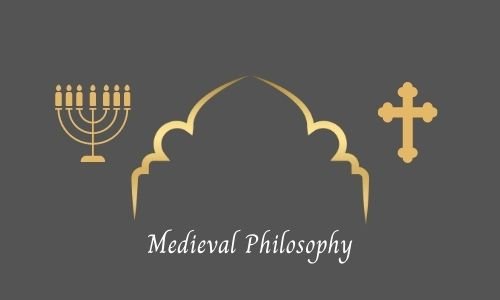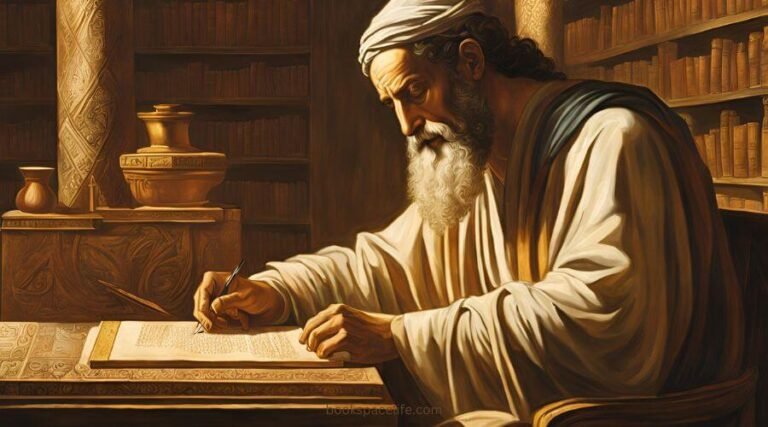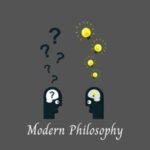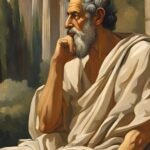Philo of Alexandria
Ibn al-Haytham (Alhazen) : The Father of Optics and Pioneer of Scientific Method
Ibn al-Haytham, known in the West as Alhazen (965 – 1040 CE), was one of the most influential and revolutionary thinkers of the Islamic Golden Age.
Born around 965 CE in Basra (modern-day Iraq), his works laid the foundation for numerous fields of study, including optics, physics, astronomy, and scientific methodology.
Often regarded as the “Father of Optics,” his groundbreaking studies on light, vision, and the nature of sight helped shape future developments in science and laid the groundwork for modern scientific method.
His vast contributions to philosophy and science had a profound impact on both the Islamic and Western intellectual traditions, influencing thinkers such as Johannes Kepler and Rene Descartes.
Table of Contents
(1) Early Life and Education
Ibn al-Haytham was born into a family of scholars in Basra, a major intellectual hub in the Abbasid Caliphate.
He was given the name Abu Ali al-Hasan ibn al-Haytham and spent his early years immersed in the rich academic environment of the city.
From a young age, he exhibited a keen interest in philosophy, mathematics, astronomy, and natural sciences, and his early education involved rigorous study in these subjects.
During his youth, Basra was a place of intellectual ferment where scholars of various religious and cultural backgrounds gathered to exchange ideas.
Ibn al-Haytham attended the famous House of Wisdom in Baghdad, which was a center of learning established by the Abbasid caliphs.
There, he had access to the best knowledge of the time, including the works of Greek philosophers like Aristotle and Ptolemy, and Persian scholars like Al-Khwarizmi.
Influenced by Greek rationalism, he studied mathematics and philosophy, as well as optics and astronomy, laying the groundwork for his later discoveries.
His travels, particularly to Cairo, played a significant role in shaping his intellectual journey.
In the court of the Fatimid Caliphate, Ibn al-Haytham found patronage and an audience for his intellectual pursuits.
However, his most significant period of work occurred after an intriguing yet controversial proposal.
His insistence on challenging the established Ptolemaic model of vision and the popular theory of light gained him both support and opposition in his later years.
(2) Philosophical and Scientific Contributions
Ibn al-Haytham’s contributions to philosophy and science are vast and wide-ranging.
He was an early proponent of empirical observation and experimental science, principles that were later central to the development of the scientific method.
His works on optics, light, and vision are considered foundational, while his broader philosophical reflections on reason and knowledge significantly influenced later Islamic and European thought.
(i) Optics: The Book of Optics (Kitab al-Manazir)
Ibn al-Haytham’s most famous and influential work is “The Book of Optics” (Kitab al-Manazir), completed around 1021 CE.
In this groundbreaking text, he offered a comprehensive theory of vision and light, fundamentally challenging and overturning the long-accepted Greek theories of vision espoused by Ptolemy and Aristotle.
Before Ibn al-Haytham, the prevailing theory held that vision occurred when light emanated from the eyes and interacted with external objects.
Ibn al-Haytham proposed that vision was the result of light entering the eye from external sources, not emitted from the eye itself.
He argued that light traveled in straight lines and that the eye received light reflected off objects, leading to the perception of sight.
This idea was revolutionary and is now the basis for modern optics.
Ibn al-Haytham’s experiments also contributed to the understanding of refraction, reflection, color perception, and lenses.
His exploration of pinhole cameras (later known as the camera obscura) was a precursor to modern photography and provided an empirical basis for the study of light and vision.
In his research, he used a scientific method that relied on observation, hypothesis testing, and experimentation—a methodology that was revolutionary for its time and anticipated the future development of experimental science in the West.
(ii) The Scientific Method
Ibn al-Haytham’s commitment to the scientific method was one of his most profound contributions to philosophy and science. He emphasized the importance of empirical observation and logical reasoning in developing theories, which laid the groundwork for later thinkers such as Galileo and Newton.
Alhazen did not simply theorize about the nature of light and vision—he conducted experiments to validate his ideas, which was a departure from the more speculative methods of earlier philosophers.
In his writings, particularly in his commentary on Aristotle’s “Posterior Analytics”, he articulated the process of scientific inquiry as involving hypothesis formulation, empirical investigation, and theoretical explanation.
This approach helped establish the empiricist tradition in science and influenced later developments in the scientific revolution.
(iii) Astronomy and Mathematics
Although Ibn al-Haytham is primarily remembered for his contributions to optics, his work in astronomy and mathematics was also significant.
He worked on improving the Ptolemaic model of the universe, addressing problems in planetary motion and celestial observations.
He attempted to reconcile the discrepancies between Ptolemaic and observed planetary positions by refining the epicyclic model of planetary motion.
Additionally, Ibn al-Haytham made strides in the field of mathematics by working on the application of geometry to the study of light and optics.
His use of geometry to explain the behavior of light laid the foundation for the future development of geometrical optics and trigonometry.
(3) Influence and Impact
Ibn al-Haytham’s influence on both the Islamic world and the Western scientific tradition is immense.
His work on optics and the scientific method became the basis for much of the scientific thought that followed, influencing generations of scholars and scientists in both the Islamic world and Europe.
(i) Impact on Islamic Science
In the Islamic world, Ibn al-Haytham was revered as one of the greatest scientists of his era.
His works on optics were integral to the development of Islamic science and were widely studied in the Medieval Islamic period.
His focus on empirical investigation and rational inquiry influenced later philosophers and scientists such as Ibn al-Shatir and Al-Biruni.
His ideas contributed to the flourishing of various scientific disciplines, especially those concerning light, vision, and celestial mechanics.
(ii) Influence on Western Thought
The impact of Ibn al-Haytham on Western science was significant, particularly during the Renaissance.
His works, especially The Book of Optics, were translated into Latin in the 12th century and were studied by scholars in medieval Europe.
Thinkers like Roger Bacon, Johannes Kepler, and Leonardo da Vinci drew heavily on Ibn al-Haytham’s theories of light, vision, and optics. Kepler, in particular, cited Ibn al-Haytham’s work in his own studies of vision and astronomy, which contributed to the later development of modern optics.
Ibn al-Haytham’s scientific method—which emphasized observation, experimentation, and the testing of hypotheses—was particularly influential in the Scientific Revolution.
His approach to scientific inquiry anticipated later figures like Galileo and Newton, and his work can be seen as an early foundation for the modern emphasis on empiricism in scientific research.
(4) Legacy
Ibn al-Haytham’s legacy as the Father of Optics and a pioneer of the scientific method is enduring.
His works on light and vision continue to be referenced by modern scientists and physicists.
His contributions not only advanced the fields of optics and mathematics but also reshaped the way science was conducted by introducing methods of systematic observation and experimentation that are still central to modern scientific practice.
Ibn al-Haytham remains a central figure in the history of science, whose work transcended his time and bridged the gap between the classical knowledge of the Greeks and the scientific revolution in the West.
His dedication to reason and empirical evidence continues to inspire contemporary scholars and serves as a testament to the lasting power of intellectual curiosity and rigor.








